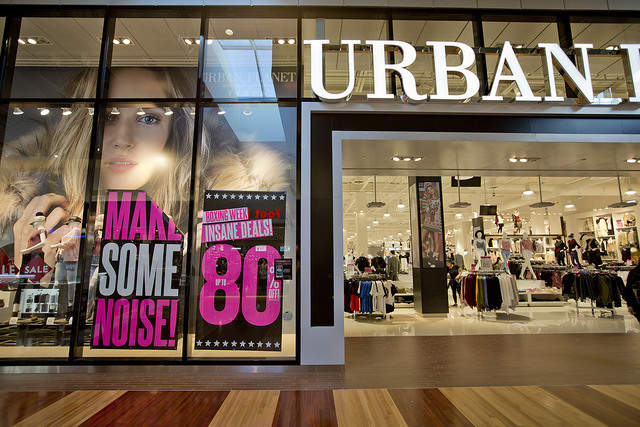Chinese retailers are capitalising on Single’s Day, with over a third of the Chinese population spending money during the annual event. With Single’s Day sales last year topping $45bn in China alone, the question is worth asking – is the western world missing out?
What is Single’s Day ?
The annual Single’s Day is celebrated in China on 11 November and was introduced in the 1990s by Chinese students who wanted to set up an anti-Valentine’s day to celebrate their single status.
Chinese marketplace Alibaba saw potential in the holiday, and turned it into an online shopping event in 2009. While initially only 27 merchants participated in the event, and only £5m was spent by shoppers, the event has fast caught on, with now over a third of China population making purchases on Singles Day.
Originally, Single’s Day offers were limited to items tailored to singles, such as travel tickets and boyfriend pillows. But in the recent years, offers have expanded to everyday items, from décor to cleaning supplies.
The holiday overtook Cyber Monday sales in 2013, with consumers spending $5.6bn throughout the day, followed by a 61% increase in 2014, when consumers spent over $9bn.
In 2017, Alibaba said that over 15 million products from more than 140,000 brands, including 60,000 international brands, would be offering discounts on Tmall, up from 100,000 last year. This has led to more than $33bn spent in 24 hours during Singles Day, which was higher than Australia’s annual December retail spend.

US Tariffs are shifting - will you react or anticipate?
Don’t let policy changes catch you off guard. Stay proactive with real-time data and expert analysis.
By GlobalDataSingle demographic
In the US, there are now over 110.6 million Americans, 18 and older, who are single, divorced, or widowed. This amounts to 45.2% of the adult population. 53.2% of single people are women, 46.8% are men.
In the UK there are 7.7 million one-person households – an increase from 6.6 million in 1996. Out of the 7.7 million, 3.9 million are between the ages of 16 to 64.
Bridgethorne joint managing director John Nevens said: “Brands and own-label suppliers seem to be beginning to recognise that the changing makeup of British society is something they need to factor into their planning.
“Shoppers obviously behave differently according to their circumstances. Somebody living on their own will not necessarily want to buy the same product in the same quantities as others, and this will have an impact on the format and diversity of how products are presented, from packaging to portion size.”
Last year Facebook released a number of tips on how to target single people. It suggested that marketers be as mobile as the single people they are targetting. According to the datza, single people spend most of their time on apps, binge-watching TV shows and social media, and Facebook suggested marketers use these areas to reach their targeted audience.
Another tip suggested empathising with single people, by using messages with the mindset of a person who identifies as single, especially during holidays.
Lastly, Facebook advised marketers could offer new experiences for people who have just gone through a break-up.
Single’s Day in the UK
An adaptation of Single’s Day in the UK could face some challenges, as Chinese Single’s Day clashes with UK’s Armistice Day, which marks the end of World War I, when the nation remembers those who have died in military service.
To many, a shopping event on that day will seem distasteful.
KPMG head of retail David McCorquodale said: “Singles Day in China is the biggest promotions day in the world. The date will stall its entry to the UK, but not forever.”
As online retail allows consumers access to millions of products from thousands of manufacturers, it seems impossible to envisage that Single’s Day will not extend its reach, in some form, to Western consumers in the near future.
The UK’s retailers are already starting to target single people. In the UK, the meals-for-one market is estimated to be worth more than £20bn, which has led big food manufacturers such as Premier Foods to launch convenience foods such as single-serve pasta pots and sauce pouches.
Data firm Nielsen analyst Joanna Parman said: “Small households have a lot of buying power and shop very differently to family shoppers.”
Nielsen’s recent shopper poll found 18% shoppers wanted to buy smaller pack sizes.
Parman added: “Households with one or two people are more likely to shop little and often rather than doing a large weekly shop. It’s the older, small households that have the most disposable income and are spending the most on food and drink.”
While for decades supermarkets have focused on targeting families with buy-one-get-one-free promotions and supersized grocery packs, changing consumer behaviour and changing demographics are forcing supermarkets to rethink their strategies.
In July 2018, Tesco started targeting the growing number of British people who live alone or eat alone by expanding its range of single-portion foods.
The retailer’s new range, aimed at single people, includes solitary beef burgers and steak fillets, small packets of potatoes and broccoli, and smaller bottles of wine. The single-serve range now consists of 430 products.





